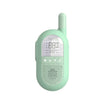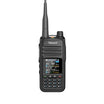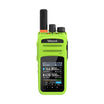Overview:
The primary role of the armed forces is to ensure the nation's security and the well-being of its citizens. Given the critical nature of their missions, the communication systems utilized must offer the highest levels of security, confidentiality, and reliability. Integrated communication solutions tailored to these stringent requirements are essential for effective coordination and operational success.
Key Communication Needs for the Armed Forces:
The unique operational demands of the armed forces necessitate a communication system encompassing:
- Enhanced Safety Features: Including man-down alarms and SOS functions for immediate response during emergencies.
- Strategic Coordination: Multi-group dispatch capabilities for seamless mission coordination.
- Versatile Communication Channels: Support for voice, video, photo, and text multimedia communication to provide comprehensive situational awareness.
- System Integration: Seamless interoperability with existing Private Mobile Radio (PMR) networks to ensure widespread connectivity.
Hardware Requirements:
To meet the rigorous conditions of armed forces operations, communication devices must:
- Adhere to Standards: Comply with military specifications (MIL-STD) for durability and reliability.
- Enable Intelligent Management: Equipments must support advanced management functionalities to control complex operations.
Software Capabilities:
Software solutions should enhance operational efficiency and security through:
- Diverse Calling Functions: Support for group, individual, and all-call options to accommodate various communication scenarios.
- Security and Control: Authority management features, including stun and kill options, to maintain communication security.
- Operational Efficiency: Features like priority settings, extensive call history, and multi-group listening to optimize mission execution.
- Advanced Tracking and Reporting: Utilization of Geo-Fence, terminal position, and track playback features for precise monitoring and reporting.
- Comprehensive Messaging Options: Ability to send and receive broadcast, group, and individual messages in various formats for thorough communication.
- Patrol and Area Management: Detailed planning and statistical analysis for patrol areas to enhance security measures.
- Network Compatibility: Integration with digital mobile radio gateways to extend communication reach.
- Top-tier Security: Implementation of AES 256-bit encryption to safeguard all communications.
Conclusion:
The armed forces require a communication system that is not only resilient and reliable but also secure and versatile. Advanced PoC solutions provide the necessary tools for ensuring that armed forces can maintain high levels of operational readiness, coordination, and security, ultimately safeguarding the nation's interests and its people's well-being.






























